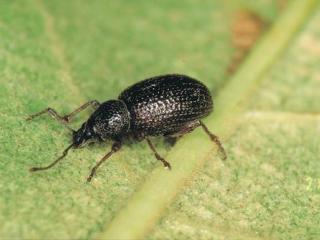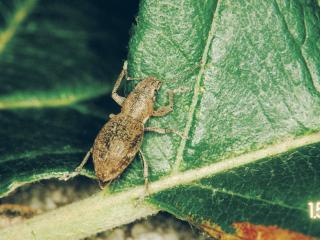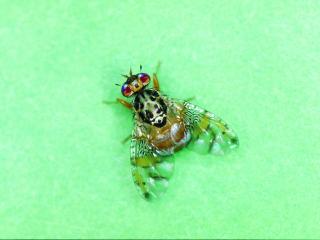Native budworm
Native budworm (Heliothis punctigera) is an occasional spring pest on fruit trees in Western Australia. The caterpillars feed on shoots, flowers and newly set fruit, causing fruit drop. The caterpillars may grow to 40mm long and can be green or brown in colour. Often the level of damage is not sufficient to warrant chemical control but if required, the biological insecticide Bacillus thuringiensis is effective on young caterpillars.
Lemon bud moth
The larva of the lemon bud moth (Prays parilis) feeds on the flowers of lemon trees and can cause fruit to become misshapen and deformed. The larvae are yellowish to reddish-brown in colour and grow up to 10mm long. They are most commonly found within the buds of unopened lemon flowers.
Affected flowers can often be identified by the small exit hole left by larvae. Chemical control is only required for big infestations. Try garlic extract as a repellent and check with your local garden centre if chemical controls are needed.
Weevils
Weevil species causing damage to citrus trees in Western Australia include the apple weevil (Otiorhynchus cribricollis), garden weevil (Phlyctinus callosus) and fullers rose weevil (Asynonychus cervinus).
Weevils damage leaves and occasionally the fruit. Garden weevil and apple weevil can be trapped and then destroyed by attaching corrugated cardboard strips about 15cm wide around the trunks of trees.
The weevils, which feed at night, will shelter under the cardboard during the day which can then be removed and destroyed. Fullers rose weevil shelters in trees and cannot be controlled using this method. Use fluffy Dacron (quilt wadding) bands around tree trunks to slow the movement of weevils into the tree canopy.
Mediterranean fruit fly
Mediterranean fruit fly or Medfly (Ceratitis capitata) is the most common pest on citrus in home gardens in the metropolitan area and country towns and is particularly active between November and July. First detected in Western Australia in the 1890s, Medfly will attack most citrus, especially mandarins and oranges.
The presence of small piercing holes in the fruit indicates that eggs were laid under the fruit skin and that maggots, up to 8mm long, may be present. The maggots tunnel into the fruits and cause rotting, often resulting in premature ripening and fruit drop.
Adults can be controlled with weekly baiting of leaves with a splash bait containing spinosad which is derived from a bacterium and is a contact and stomach poison. Commercial or homemade baits should be hung in the tree to indicate the presence of the fruit fly and reduce their numbers.
To protect the crop the individual fruits can be bagged or the tree covered with exclusion fabric netting. Only leave the covers in place while the fruit is ripening.
To get rid of infested fruit, seal them in plastic bags and place bags in a bin, freeze or microwave the fruits or place fruit in water with a small amount of cooking oil on the water surface. The oil layer will suffocate the larvae. Medfly larvae can survive burial, so this method is not recommended for fruit disposal.
For further information on control and recipes for baits consult our article on Mediterranean fruit fly.



